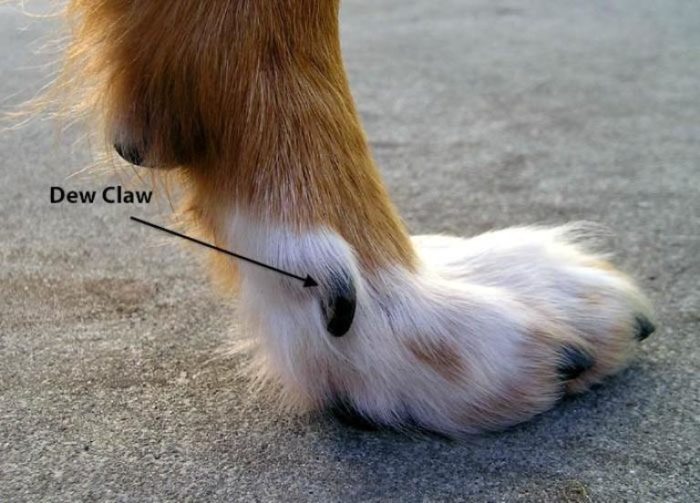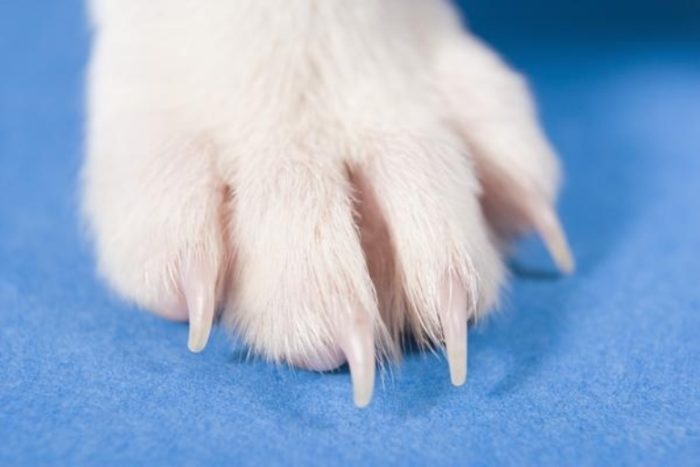Dog toes number is not something most dog owners pay attention to but people who have been observant about the toes of their canine companions would have observed that every dog doesn’t come with the same number of toes. While it is normal for your fur buddy to have four toes each on each limb, both front and back, some of them come with extra appendages or what is known as extra digits.
Now, the extra digit in a dog can be quite harmless and in such situations, your best bet is to let it be. However, in situations where it keeps getting caught on things and leading to injuries for your pooch, then, you need to seek the attention of your vet who would recommend a removal through a simple surgical process that takes very little recovery time.
Table of Contents
How Many Toes Are Dogs Born With?
Normally, members of the canine population have 16 toes in all – four on each of the limbs. These toes are located exactly at the front of the feet and are completely jointed. However, there are breeds that have an additional toe in the front limb, making it five in number – these are called the dewclaw. Any dog that is born with these extra digits is considered to be polydactyly (in a layman’s explanation, poly means many and dactyl means digits).
The location of this extra digit is usually higher above the level of the other toes on the front limb and many of them may not be fully formed. Though it is an unremarkable trait, the polydactyly digit usually causes no problems except in cases where it is found to be hindering a dog’s leg or other toes on the limb.
Interestingly, extra digits are not limited to the members of the canine population, other animals like the felines and mice mole have been found with these appendages, and sometimes, it can also occur in humans. This additional appendage doesn’t normally have contact with the ground except when the nails become too long; then, it can lead to tear and harm for the dog. Thus, a dog’s nails must be clipped when it is due to avoid issues. Dewclaws can also be located at the hind limb of a dog as has been witnessed with a few breeds.
Types Of Polydactyly In Dogs

Polydactyly in the canine population can occur under two conditions;
-
- Some dogs are intentionally bred to exhibit this trait; this may be the handwork of specialized breeding projects which are targeted at getting a particular trait.
- The extra toes can be a result of some uncommon autosomal recessive genetic condition (a genetic variation). It can be simply explained as a gene mutation.
A good example of a dog with additional appendages is the Norwegian Lundehund breed that usually comes with six toes as opposed to the normal four. While dewclaws are supposed to be located above the other toes with no visible connection to the rest, the Norwegian Lundehund’s six toes are not just fully formed, they are well-muscled and completely jointed. The pup is adapted to scale narrow cliff trails in Vaeroy where the breed was originally used for hunting the Puffin bird. The extra digit is considered to be an advantage for those dogs that walk on uneven ground or on snow.
Common Breeds That Have Extra Digits
Dog breeds originating from extreme environments like mountainous regions are the ones that usually exhibit extra digits. It is believed that the likes of Saint Bernard and Mastiff use the appendages for extra support; however, it has been established that the fifth toe is weaker compared to the others, thus, it offers less support. This makes the actual use of the dewclaws very uncertain except perhaps in the case of the Norwegian Lundehund that has all its toes both extra and normal, fully formed and on the same level.
Dogs that are used for shows may need to display a dewclaw before they can be registered in any show; some officials in dog shows require it.
Rottweilers, German Shepherds, Yorkshire Terriers, and Poodles may have dewclaws. Below is a list of the breeds that can be born with additional toes;
• Great Pyrenees
• Portuguese Sheepdog
• Icelandic Sheepdog
• Can Fila de Sao Miguel
• Saint Bernard
• Estrela Mountain Dog
• East Siberian Laika
• Anatolian Shepherd Dog
• Beauceron
• Catalonian Sheepdog
• Briards
• Norwegian Lundehund
Treatment Of Polydactyly In Dogs
Dewclaws in some breeds may have a reasonable genetic explanation attached to them, however many of these dogs with extra digits are considered to have a genetic fault or a genuine malformation. More often than not, extra digits in dogs are attached by bone (these may be a bit firmer) but there are cases of many that are attached by skin (these are weaker). If an extra digit is not causing any problems for your canine friend, it may be a good idea to let the dog live with it.
On the other hand, if it is constantly causing problems for the dog by getting caught on something and hindering movement, then, it can be taken out through surgery. Important to note that the recommendation for taking out a dog’s extra digit can only come from the vet and must be done at the puppy stage before the dog comes into adulthood.
The surgical process is usually a simple one and the recovery process is equally very fast. Once the extra digit is removed, it may or may not require any stitching. The onus is now on the pet owner to ensure that whatever dressing is put on the wound is kept clean to avoid infections.
Read More: Why Do Dogs Wink? All The Things Your Dog’s Eyes Say
Characteristics Of Dewclaws In the Canine Population
-
- Dewclaws can be located on the front limb (the inside), though we have some on the hind limb on rare occasions
- The normal toes and the dewclaws are not usually on the same level; the extra toes generally occur a little above the normal four toes. For this reason, it doesn’t touch the ground
- The attachment of the extra toes to the dog’s leg is not usually firm. Often wiggling in an upward and forward movement. Relative to the hind dewclaws, the front extra digits are less mobile – the reasons being that most front appendages are attached by bones while hind ones are attached by the skin.
- There are exceptional situations where dogs have two dewclaws on their hind limb – a good example is the Great Pyrenees
- Breeds like the Norwegian Lundehund and Briard come with dewclaws on all their four limbs; this makes their total number of toes 20 as opposed to 16
- There have been some uncommon cases where some dogs have a couple of dewclaws on each of their hind limbs
